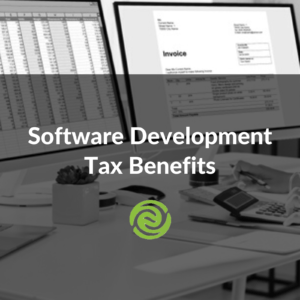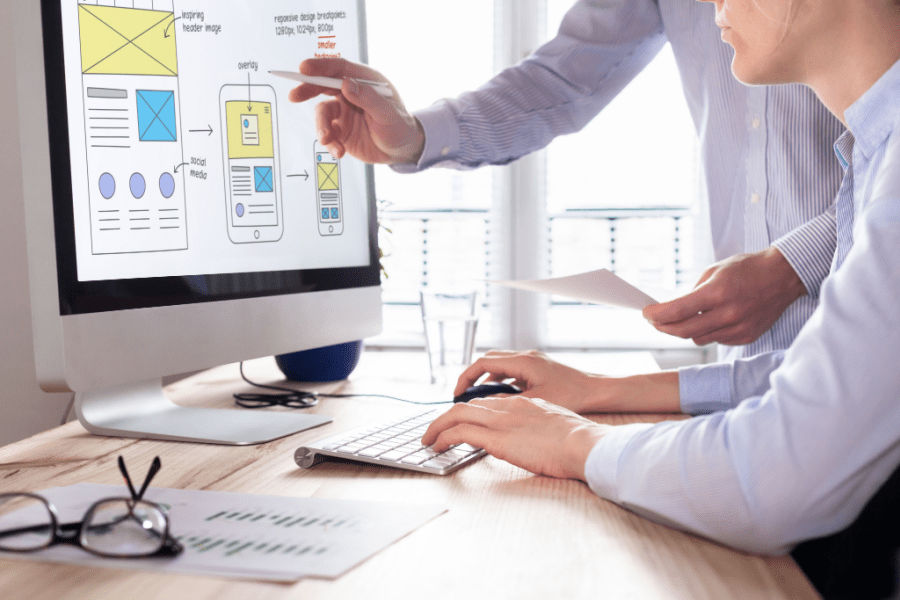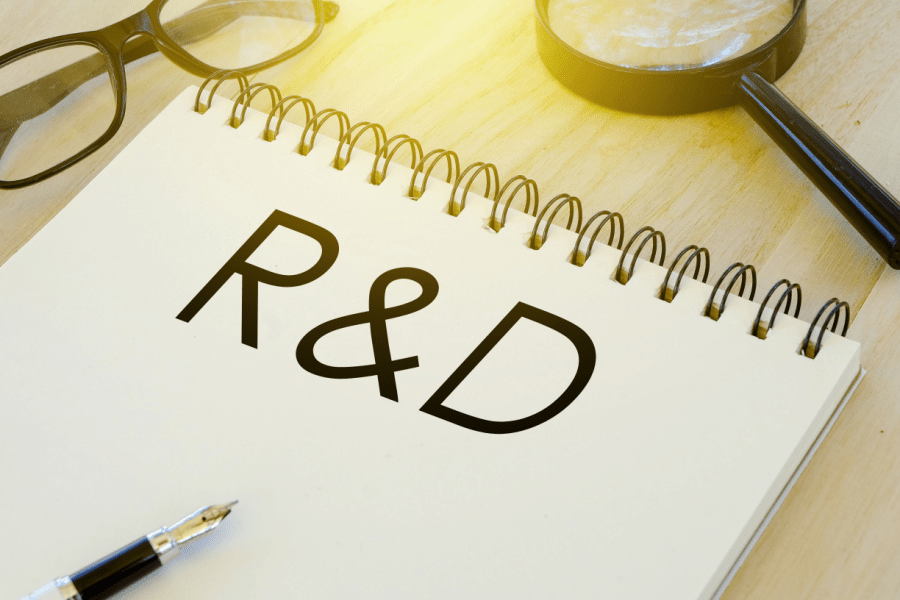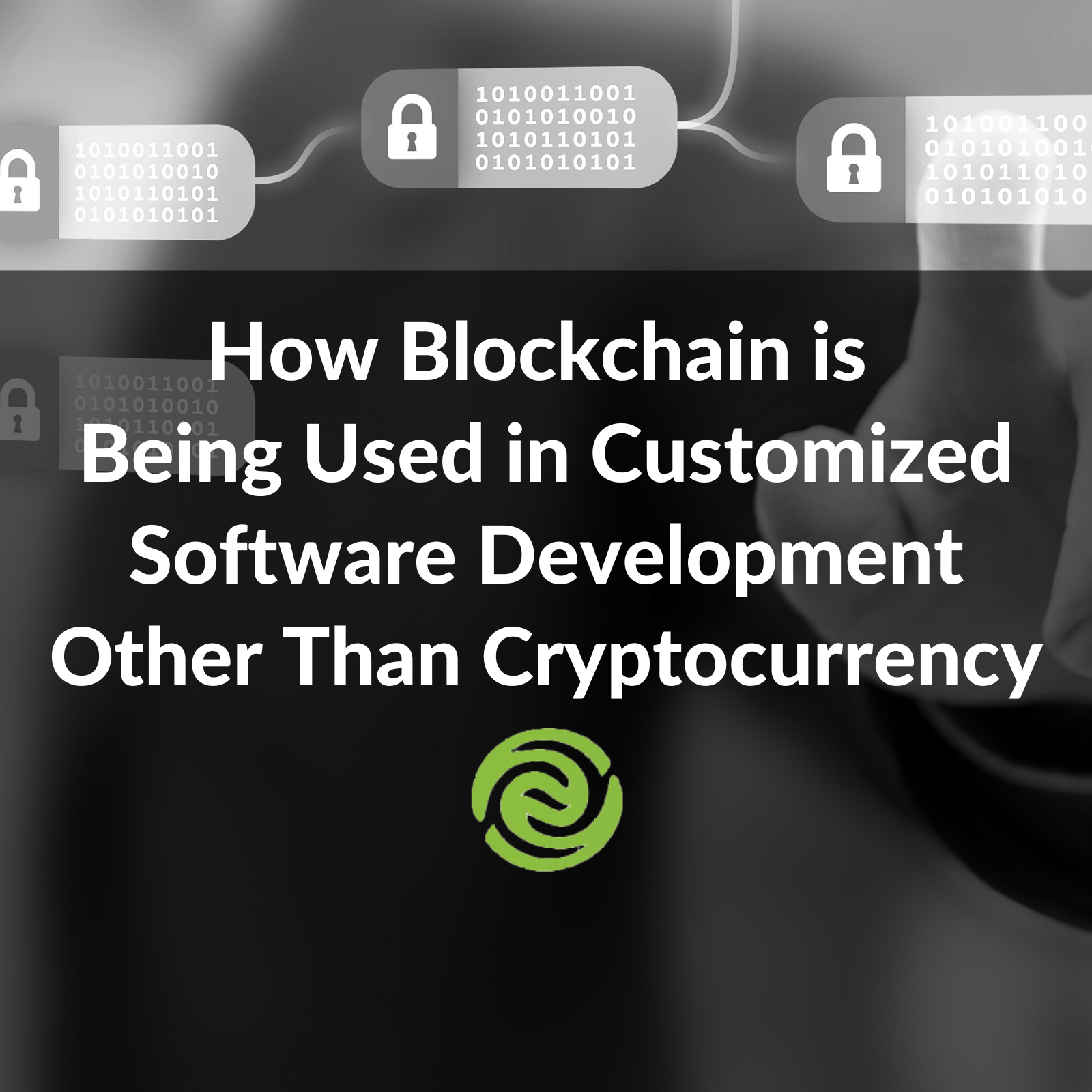You may have heard of Blockchain for cryptocurrency, but did you know this technology also…
Software Development Tax Benefits: R&D Tax Credit and Bonus Depreciation
 There are two tax credits your company may be eligible to use to significantly reduce your tax burden: the R&D Tax Credit and Bonus Depreciation.
There are two tax credits your company may be eligible to use to significantly reduce your tax burden: the R&D Tax Credit and Bonus Depreciation.
The Research and Development (R&D) Tax Credit (IRC §41) provides cash incentives to any size US business that performs qualified research activities (QRAs) in the United States using science and/or technology to innovate, automate, develop, modify, and improve products or services. Since technology and software development involve a lot of upfront work and research, these are eligible for the tax benefit provided the R&D meets the IRS’s criteria (below).
Bonus Depreciation is a tax credit that allows upfront depreciation of most types of tangible and intangible property, such as machinery, vehicles, equipment, patents, copyrights, and computer software. Tax year 2022 is the last year for 100% bonus depreciation, then in 2023, the percentage decreases to 80%, in 2024, 60%, and so on.
How Does Software Development Qualify for the R&D Tax Credit?
Both custom software development and new technology for internal use and external use (for lease, license, or sale) can qualify for the R&D tax credit.
R&D Qualifiers for Internal Use Software Development
Software developed for internal use may qualify for the tax credit if it supports the business internally. According to the IRS, your new software or automation should improve general and administrative functions in financial management, such as record keeping, accounting, inventory management, budgeting, forecasting, financial reporting, and taxes. It can be developed to improve human resources functions, such as hiring, training, payroll, and benefits, and for data processing, facility management, marketing, and security services.
These functions can be improved by replacing legacy software with new custom software, creating business process automation solutions, designing and developing a mobile app for your team, creating web applications to support your core business, or developing a custom ERP.
Software or technology that’s new to the business and supports services within the business can qualify for R&D if it meets the following research criteria:
- It must be technological in nature and rely on engineering, physics, and/or computer science.
- It must create a brand-new or improved business component rather than just an aesthetic change.
- There must have been experimentation through modeling, simulation, testing, or other methods.
- Technical uncertainty must be eliminated. For example, you must show you can achieve the desired outcome and how will you get there.
- It must be innovative. For example, the project must target a significant cost reduction or improvement, or other measurable gains.
- There must be a substantial economic and technical risk. This involves a commitment of considerable resources and substantial uncertainty that the return on investment will be met.
- Is the product or technology available commercially? If it is, someone else has done the R&D, so you can’t take the tax credit.
All seven must be applied to each software component, version, and module.

R&D Qualifiers for External Use Software Development
External-use software development, such as mobile apps, web apps, business process and robotics automation, and other solutions, may qualify for the R&D tax credit if it meets the same first four criteria for internal use:
- It must be technological and rely on engineering, physics, and/or computer science.
- It must create a new/improved module rather than just a visual change.
- There must be an experimentation process, i.e., modeling, simulation, testing, etc.
- Technical uncertainty must be eliminated. You must show you can achieve the desired outcome and how will you get there.
All four must be applied to each software component, version, and module.
Examples of Internal & External Software and Application R&D Qualifiers
There are four types of qualifying R&D undertakings: new product development, new process development, incremental product development, and incremental process development. All CUSTOM applications that are newly developed and improve existing software enough that it changes your business process and have a level of technical uncertainty may meet the R&D requirements, such as:
- Mobile app
- Web application
- Custom software
- Firmware
- Custom ERP
- Application Programmer Interface (API)
- Data Handling Solution
As you can see, the rules and regulations surrounding the R&D tax credit are complex and will be completely unique to your business and tax situation. We recommend you seek an R&D tax specialist to help identify eligibilities.

R&D IRC §174 of the Tax Code
Let’s touch on R&D IRC section 174 for a moment. As of 2022, IRC §174 does not allow some R&D QRA expenses to be deducted. These expenses include but are not limited to wages of internal staff directly involved in the R&D, supplies and raw materials used in the process, or work performed by a contracted third party that assumes most of the financial risk. These costs must now be amortized over five years. If your R&D expenses were incurred before 2022 or they’re considered qualifying expenses, then they would likley be eligible for the standard R&D §41 deduction.
Whew! Like all tax codes, the R&D tax credit is complex. Current expense methods, deferred expense methods, deductions, credits, exceptions, and additional technicalities are all details to explore. Please consult with an R&D tax specialist or your CPA to learn the ins and outs, discuss your unique situation, and find out if your state is a conforming state.
Bonus Depreciation of Software & Computer Equipment
The Internal Revenue Service (IRS) Bonus Depreciation tax code allows business taxpayers to deduct additional depreciation for the cost of qualifying new or used business property, including computer equipment and technology and custom or commercial software, in the year it was placed into service, beyond normal allowances.
When claiming bonus depreciation, qualifying business property can be depreciated 100% between September 27, 2017, and December 31, 2022, with the potential to reconcile your tax return if you missed claiming it. Bonus depreciation will phase out over the next four years, starting with a maximum depreciation of 80% in tax year 2023.
According to the IRS, to be depreciable, the property must meet all four of the following requirements:
- It must be property you own.
- It must be used in your business or income-producing activity.
- It must have a determinable useful life.
- It must be expected to last more than one year.
Technology and software purchased off-the-shelf or those that are custom developed are listed as qualifying for bonus depreciation. Examples include:
- Software applications
- Mobile applications
- Web applications
- Business process automation
- Robotics process automation
- Database/data management
- Content management platforms
- Cloud and Infrastructure solutions
- Application Programmer Interfaces (APIs)
- Business intelligence solutions
- New or improved tech stacks
- Updating or rebuilding legacy systems
It is important to note that only 18 states allow bonus depreciation of any kind. Be sure to check with your CPA to learn more about your individual tax situation and find out if your state is one that conforms.

The Bottom Line: Innovate & Grow Your Business With R&D and Bonus Depreciation Tax Incentives
The R&D tax credit (IRC Section 41) incentivizes US companies to innovate and grow by researching and developing products, processes, models, formulas, and techniques, including custom software and technology systems that modify, supplement, and improve business processes. You may be eligible for the tax credit if you have incurred R&D costs internally and/or through an outside development company, such as Swip Systems.
Bonus Depreciation provides the option to depreciate all or most of the cost of new off-the-shelf software and computer equipment, as well as custom software and technology, in the year it was placed into service rather than over time. 100% bonus depreciation ends December 31, 2022, reducing to 80% in 2023. This tax code is another way to save capital and grow your business with a little help from the IRS.
 Swip Systems is Here to Help with Software & Technology R&D
Swip Systems is Here to Help with Software & Technology R&D
Swip Systems is your single source for business and technology needs. Based in the heart of the Midwest, in St. Louis, Missouri, we work with nationwide business owners and IT teams to consult, research, design, and develop custom software solutions and applications for intelligent business systems that minimize business risk and promote profitability. Reach out to us today for a no-obligation conversation to see how we might help you with software and business process R&D. 877.377.SWIP/618.346.8014
Disclaimer: Please note, Swip Systems has made every attempt to ensure the accuracy and reliability of the information provided. This article is informational only, it is not legally binding tax advice. Please consult with your CPA or tax advisor for verification of these tax codes and your individual tax situation.







